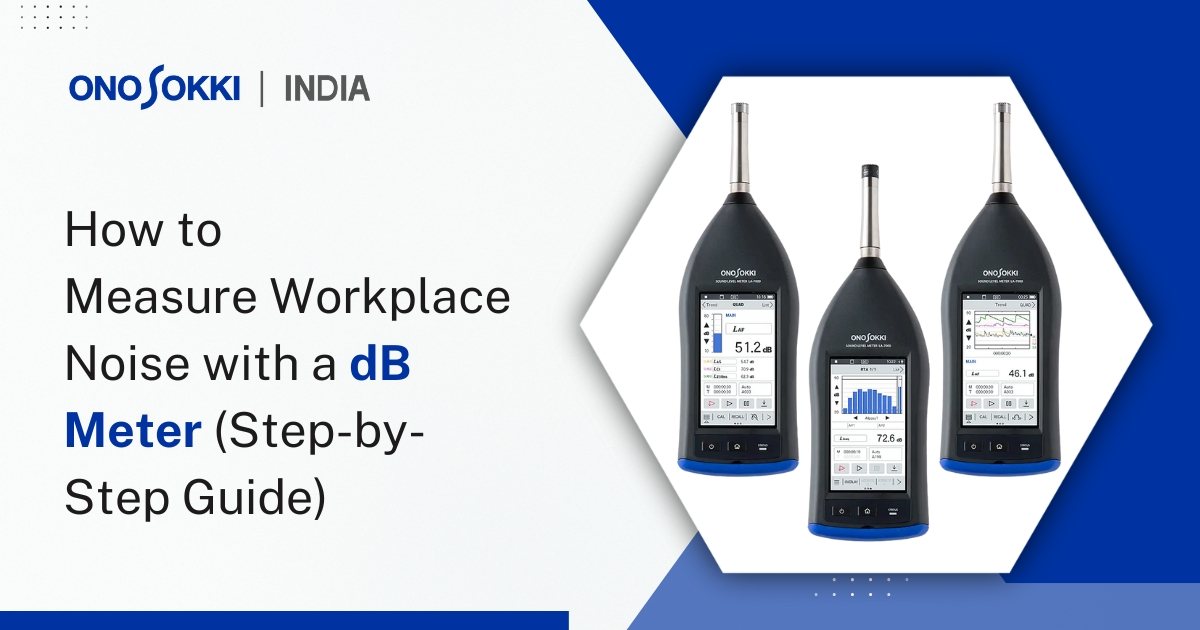



If you’ve ever walked into a loud factory floor and had to raise your voice just to say “hello,” you probably already know what workplace noise is all about. But measuring that noise? That’s something most people think they understand, Until it’s time to actually do it.
This guide is for anyone who needs to take real, accurate sound measurements in industrial spaces — not just for compliance, but for the safety and comfort of their teams.
Let’s be honest. Noise testing often gets pushed to the bottom of the safety checklist — right after fire drills and just above labeling storage cabinets. But the reality is, excessive noise isn’t just annoying — it’s dangerous.
Long-term exposure to high sound levels in the workplace can lead to:
If your factory or facility uses heavy machinery, grinding tools, or anything that hums, bangs, or buzzes loudly — it’s time to start taking this seriously.
In simple terms, a dB meter (decibel meter) is a handheld device that tells you how loud a place is. Think of it as a thermometer, but for noise. Instead of measuring temperature, it gives you a number in decibels (dB) that represents how intense the sound is around you.
Most dB meters used in factories or industrial setups have features like:
And yes — not all meters are built the same. More on that later.
Every country has some version of occupational noise regulation. In India, it usually ties back to The Factories Act and CPCB guidelines. Globally, standards like OSHA and ISO 9612 provide detailed frameworks.
Here’s a general rule of thumb:
| Noise Level (dB) | Exposure Risk |
|---|---|
| 70–80 dB | Usually safe |
| 85 dB | Hearing protection recommended if exposed for 8+ hours |
| 90+ dB | Potentially hazardous — immediate action needed |
For example, the hum of machinery in a textile unit might clock in at 75 dB, while a metal press can shoot past 100 dB. If your workers are standing near that press all day, that’s a problem.
Let’s walk through the process in plain English. This isn’t just theory — it’s how noise measurements actually happen in the field.
Step 1: Calibrate Your dB Meter
Before you even walk onto the shop floor, make sure your meter is calibrated. If it has a calibrator attachment, use it. If not, follow the instructions to set a reference tone. A miscalibrated meter is as good as no meter at all.
Step 2: Prep the Measurement Area
Step 3: Set the Meter Right
Step 4: Walk, Listen, Record
Move through the site like a noise detective. Listen. Take readings from:
Document everything. Take three readings at each location and average them.
Step 5: Interpret the Results
This is where it gets interesting. Did you hit above 85 dB in multiple spots? That’s your red flag. You might need to update hearing protection guidelines, or even rotate workers to reduce exposure.
Let’s say you find that one part of your production line hits 94 dB for eight hours a day. Now what?
Here are a few things you can do:
Noise control isn’t about silencing everything — it’s about managing exposure smartly.
So which meter should you actually buy?
Here’s what to look for if you’re serious about workplace noise measurement:
| Feature | Why It Matters |
|---|---|
| Class 1 or Class 2 certified | Accuracy as per IEC standards |
| A & C weighting filters | For different testing needs |
| Data logging | Essential for reports |
| Backlit screen | Useful in poorly lit areas |
| Tripod mount | Keeps the device stable for long-term checks |
At Onosokki India, we provide a range of dB meters suitable for industrial use — designed with the ruggedness and accuracy that manufacturing units demand.
Factory noise is more than just background hum — it’s a measurable hazard. The good news? It’s easy to track once you have the right equipment and know the process.
Taking time to measure noise doesn’t just help you stay compliant — it shows your workforce that their safety actually matters.
We at Onosokki India have been helping businesses manage sound and vibration testing for years. Whether you run a small workshop or a massive manufacturing line, we’ll help you find the right meter, the right method, and the right support.